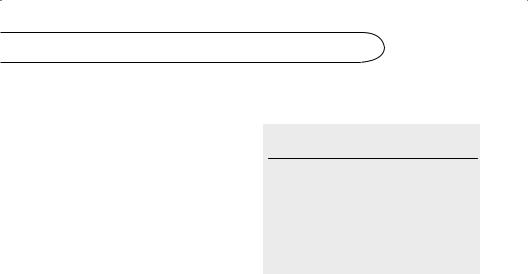
- •Contents
- •Series Preface
- •Acknowledgments
- •RATIONALES UNDERLYING NEPSY AND NEPSY-II
- •NEPSY DEVELOPMENT
- •NEPSY-II REVISION: GOALS AND DEVELOPMENT
- •COMPREHENSIVE REFERENCES
- •CONCLUDING REMARKS
- •APPROPRIATE TESTING CONDITIONS
- •TYPES OF ASSESSMENTS
- •ASSESSING CHILDREN WITH SPECIAL NEEDS
- •OTHER ADMINISTRATION CONSIDERATIONS
- •SUBTEST-BY-SUBTEST RULES OF ADMINISTRATION
- •COMPUTER SCORING
- •PREPARATORY TO SCORING
- •ORDER OF SCORING
- •STEP-BY-STEP SCORING
- •TESTS WITH COMPLEX RECORDING AND/OR SCORING
- •QUICK-SCORING: DESIGN COPY GENERAL (DCG)
- •DESIGN COPYING PROCESS (DCP) SCORING
- •OVERVIEW OF SUBTEST SCORES
- •SUMMARIZING NEPSY-II SCORES
- •CONCLUDING REMARKS
- •GOALS OF INTERPRETATION AND IMPLEMENTATION OF GOALS
- •STEP-BY-STEP INTERPRETATION OF NEPSY-II PERFORMANCE
- •INTRODUCTION
- •TEST DEVELOPMENT
- •STANDARDIZATION
- •PSYCHOMETRIC PROPERTIES
- •ADMINISTRATION AND SCORING
- •INTERPRETATION
- •OVERVIEW OF STRENGTHS AND WEAKNESSES
- •THE NEPSY-II REFERRAL BATTERIES
- •DEVELOPMENTAL DISORDERS AND NEPSY-II
- •EVIDENCE OF RELIABILITY IN NEPSY-II
- •CONVENTIONS FOR REPORTING RESULTS
- •RELIABILITY PROCEDURES IN NEPSY-II
- •CONCLUDING REMARKS
- •CASE STUDY #1: GENERAL REFERRAL BATTERY
- •CLINICAL IMPRESSIONS AND SUMMARY
- •PRELIMINARY DIAGNOSIS
- •RECOMMENDATIONS
- •DIAGNOSIS
- •Appendix: NEPSY-II Data Worksheet
- •References
- •Annotated Bibliography
- •About the Authors
- •Index

CLINICAL APPLICATIONS OF THE NEPSY-II 251
characteristic of different diagnostic groups and that may clarify the nature and underlying mechanisms of various disorders. The review also serves as a guide to help clinicians recognize patterns of results (diagnostic behavioral clusters) that are characteristic of different types of disorders. The review does not encompass all possible disorders, but considers some syndromes that are representative of types of disorders, both developmental and acquired, in which the NEPSY-II has been shown to provide helpful diagnostic information. Obviously, however, no two children with a disorder will produce identical results on an assessment.
What follows is a discussion of performance for groups of children with particular disorders. The discussion of each group is organized in the same manner. First a brief survey of research findings for the special group is presented as background, followed by the results of the NEPSY-II validity studies in relation to that group. The diagnostic cluster for the group resulting from the validity study is then presented with primary and secondary deficits, as well as co-occurring deficits. From the validity studies, as well as from findings in current research, the Referral Batteries have been formulated; therefore, the specific Diagnostic Referral Battery for the validity group will be presented last with all subtests and test ages. This discussion can serve as a guide for selecting the appropriate Referral Battery.
It should also be noted that many of the clinical groups in the validity studies are small and the data here are, therefore, to be considered as suggestions. Most often the results are, however, concordant with other research findings. The flexibility of the NEPSY-II is apparent in the fact that the clinician is also free to select any combination of subtests appropriate for a specific evaluation and the child’s age range. Further, the clinician may also decide to employ selected NEPSY-II subtests to supplement his or her standard psychological or psychoeducational tools. Under these circumstances, training in neuropsychology will allow the clinician to select subtests that he or she believes will be sensitive to determining the underlying neurocognitive impairments associated with the child’s presenting condition. Therefore, a fixed battery or flexible approach can be employed with NEPSY-II.
THE NEPSY-II REFERRAL BATTERIES
To assist examiners in selecting subtests that tap the relevant aspects of performance, Referral Batteries have been developed for the NEPSY-II. The nine Referral Batteries are designed to provide both a general overview across domains with the General Referral Battery (GRB) that is briefer than a full NEPSY-II or a focused assessment with one of the eight, specific Diagnostic Referral Batteries

252 ESSENTIALS OF NEPSY-II ASSESSMENT
meant to address common referral questions (e.g. ADHD, Mathematics Disorder, and so forth). The Referral Batteries facilitate subtest selection and guide examiners to obtain a competent assessment.
Applying the Referral Batteries also directs the examiners to gain thorough knowledge and experience of useful tests. It is important to remember, however, that Referral Batteries are guidelines only and should not replace clinical experience and judgment. (See Caution box.)
The General Referral Battery
The General Referral Battery (GRB) is recommended when the exact nature of the child’s problems is not expressed in the referral question, or to identify comorbid problems. Ideally, a full NEPSY-II is the most helpful approach in looking at primary and secondary deficits. Unfortunately, however, time or other constraints do not always allow for such a comprehensive evaluation. This is where the GRB can be particularly helpful, because this battery is composed of the most sensitive tests within each domain. The GRB is essentially a shortened form of the full NEPSY-II assessment and consists of subtests from all domains except the Social Perception domain. The General Referral Battery can be applied to most clinical conditions and can be expanded with additional subtests to cover deficits specific to the clinical condition or referral. There are seven subtests in the GRB for children 3-4 years old. For children 5-6, there are 10 subtests, and for children 7-12 there is a slightly different selection of 10 subtests. The GRB for children 13-16 years of age includes nine subtests. (See Rapid Reference 6.1 on the following page for subtests included in the GRB for two specific age ranges: 3-4 years and 5-16 years.)
The case of Julianne D. in the next chapter, Illustrative Case Reports (pp. 340) is an example of a situation in which the clinician chose to employ the GRB because she knew that the subtest selection would be sensitive to revealing deficits when the referral was vague and time was of the essence. Additional subtests can always be added to the GRB as diagnostic questions arise during the evaluation, more support is needed to verify a diagnosis, or after the initial scanning of domains has been completed, and it is clear that, ultimately, a full NEPSY-II will be needed. However, whenever a clinician is selecting subtests for an evaluation, whether they are a part of a Referral Battery or not, care must be taken that they are age appropriate. (See Caution box on the following page.)

CLINICAL APPLICATIONS OF THE NEPSY-II 253

 Rapid Reference 6.1
Rapid Reference 6.1
The General Referral Battery and GRB Subtests
in Two Age Ranges
The General Referral Battery is comprised of the most sensitive subtests from five functional domains; the Social Perception domain can be added, if needed.
The GRB is recommended when the exact nature of the child’s problems is not expressed in the referral question, or to identify comorbid problems.
Ages 3-4 |
Ages 5-16 |
Comprehension of Instructions |
Auditory Attention and Response Set |
Design Copying |
Comprehension of Instructions |
Geometric Puzzles |
Design Copying |
Narrative Memory |
Geometric Puzzles |
Speeded Naming |
Inhibition |
Statue |
Memory of Faces/MF Delayed |
Visuomotor Precision |
Narrative Memory |
|
Speeded Naming |
|
Statue (Ages 5-6) |
|
Visuomotor Precision (Ages 5-12) |
|
Word List Interference |
|
|
C A U T I O N
NEPSY II Subtests Differ for Age Ranges
The clinician may select any combination of subtests appropriate for a specific evaluation, but care needs to be taken in selecting subtests appropriate to the age range, particularly in preschool and adolescent children.
Diagnostic Referral Batteries
By the time a child is referred for a neuropsychological evaluation, a more refined referral question is often available. Addressing referral questions with preselected, circumscribed, but thorough, focused assessments is a new feature

254 ESSENTIALS OF NEPSY-II ASSESSMENT
of NEPSY-II that grew out of the extensive empirical data available from the validity testing undertaken during the development of NEPSY-II. There are eight Diagnostic Referral Batteries (DRB) for common referral questions that are designed to help the clinician select useful subtests to address the presenting problem. Some subtests will appear in one DRB but not in others. Subtests for the Referral Batteries have been selected according to the largest effect sizes for differences between the particular validity group and typical controls, as well as their identification with particular diagnostic clusters in the current literature. For instance, problems with phonological processing are closely identified with learning differences in reading, but not with learning differences in math. Therefore, the Phonological Processing subtest appears in the DRB for reading, but not in the DRB for math. Ability to handle visuospatial concepts is especially important to math learning, but not so key in reading; therefore, these tasks appear in the DRB for math, but not in the reading battery. Other subtests may be in only one or two of the batteries. For example, the Affect Recognition and Theory of Mind subtests are not included in many of the DRBs because difficulty recognizing facial emotion and/or another’s perspective is identified with few of the other validity groups, but is key to the DRB for Social-Interpersonal problems, especially autism spectrum disorders (ASD). However, if a child with a reading difference, for example, is also having social difficulties, behavior problems, or an autism spectrum disorder is suspected, then Affect Recognition and/ or Theory of Mind should be administered. As with the GRB, additional subtests can be added to a Diagnostic Referral Battery when appropriate to address specific questions.
For your convenience when testing, in the Administration Manual (p. 11) is a list of the subtests in the GRB and on page 12 is found a chart of the subtests by age for each Diagnostic Referral Battery (DRB) of NEPSY-II. When scoring, you can consult the DRB chart in the Clinical and Interpretive Manual (p. 24) with a more comprehensive discussion of Referral Batteries on pp. 13-18 of that manual. The eight Diagnostic Referral Batteries appear in Rapid Reference 6.2. The individual subtests in each Diagnostic Referral Battery will appear later in this chapter with the pertinent validity study from which the subtests were selected (pp. 258 to 327 in this chapter).
EXAMPLE: The use of a Diagnostic Referral Battery plus selected subtests is illustrated by the following case.
The clinician is preparing to evaluate 7-year-old Grant, who was referred by the classroom teacher. The teacher’s monitoring record revealed weak word attack skills, spelling difficulties, and significant handwriting problems. From the teacher’s referral, the comprehensive history form endorsed by the parents, as

CLINICAL APPLICATIONS OF THE NEPSY-II 255

 Rapid Reference 6.2
Rapid Reference 6.2
The Diagnostic Referral Batteries
Eight Diagnostic Referral Batteries to address a specific presenting problem. Subtests selected according to
•The largest effect sizes in scores with significant differences between clinical group and matched controls in the validity studies.
•Clinical experience and Identification in the current literature with particular diagnostic clusters.
•Some subtests will appear in one referral battery but not in others.
•The eight specific referral batteries are: 1 Learning Differences—Reading
2 Learning Differences—Mathematics
3 Attention/Concentration
4 Behavior Management
5 Language Delays/Disorders
6 Perceptual-Motor Delays/Disorders
7 Social Perception
8 School Readiness
well as parent/child interviews, the clinician formulates diagnostic hypotheses of dyslexia and dysgraphia. The parent interview reveals that the child’s father is dyslexic, and Grant’s profile suggests the same.
In order to test the hypothesis of dyslexia, the clinician chooses to use the NEPSY-II Referral Battery for Learning Differences—Reading. Results of this focused assessment revealed deficits on the Phonological Processing and Speeded Naming subtests, as well as a poor performance on the Memory for Names (immediate and delayed), and Design Copying subtests. These results suggest the presence of the diagnostic behavioral cluster of phonological and naming deficits associated with dyslexia, whereas performance on attention subtests was generally average. The phonological deficits in dyslexia affect both decoding (word attack) and encoding (spelling).
Further, Grant’s difficulty with paper/pencil copying suggested a visuomotor deficit underlying his handwriting problems, especially because the diagnostic Motor Score for Design Copying was significantly weak. In order to lend support to the diagnosis of dyslexia and dysgraphia, the clinician added two subtests to the referral battery: Repetition of Nonsense Words to assess phonological

256 ESSENTIALS OF NEPSY-II ASSESSMENT
processing further, and Visuomotor Precision to assess the ability to manipulate a pencil quickly and accurately. The weak results yielded by these two subtests explained the classroom results of the teacher’s monitoring record and verified the diagnoses.
With this type of targeted Diagnostic Referral Battery, the examiner can feel confident that he or she is addressing the child’s specific problems and that it will be possible to use the data to formulate helpful interventions and modifications for the child. In order to select appropriate additional subtests across domains and to interpret results on any type of NEPSY-II assessment, however, it is imperative for the clinician to stay current with pediatric neuropsychological research.
Selecting the appropriate Referral Battery for the referral question will focus the assessment and help the clinician address the problem in a parsimonious but thorough manner. In the spirit of the flexible approach to neuropsychological

 Rapid Reference 6.3
Rapid Reference 6.3
Components Recommended for Inclusion in an Assessment
•History of child from parent that includes detailed information about the child but also any neurological, developmental, psychological, or medical problems in the immediate and extended family.
•General adaptive behavior scales endorsed by parents and teachers
•Checklists pertinent to the referral question (e.g., ADHD, autism, etc.).
•Comprehensive cognitive assessment should be administered.
•Comprehensive achievement tests, including language/reading/ spelling areas. In the interest of time or presence of other constraints, a school assessment of cognition and achievement may be used to supplement neuropsychological assessment.
•Observational notes should be kept throughout the assessment.
Additional age-appropriate NEPSY-II subtests or other measures can be added, if areas of concern arise as testing proceeds.
•All measures should be reviewed for patterns of deficits that corroborate or disconfirm the NEPSY-II hypotheses.
•All educational, medical, developmental, and psychoemotional factors should be used to verify the NEPSY-II results and diagnostic cluster.
